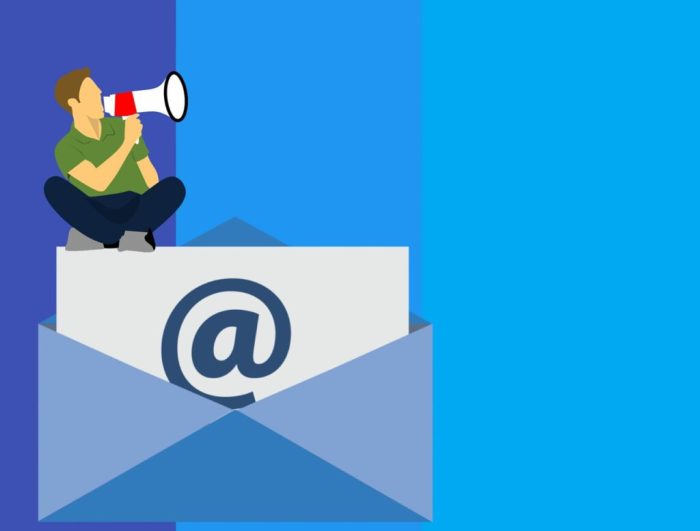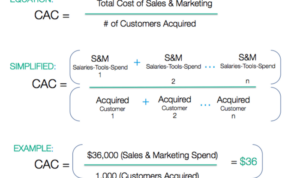Writing Compelling Emails sets the stage for unlocking the power of impactful communication, where every word holds the key to engaging your audience in a captivating narrative of success and connection.
Get ready to dive into the world of crafting emails that leave a lasting impression and drive action.
Importance of Writing Compelling Emails

Writing compelling emails is crucial in professional communication as it helps to grab the recipient’s attention, convey messages effectively, and drive desired actions. In a world where inboxes are flooded with numerous emails daily, crafting compelling emails can make yours stand out and increase the chances of it being read and acted upon.
Impact on Business Outcomes
Compelling emails can have a significant impact on business outcomes. For example, a well-written email with a clear call-to-action can drive higher click-through rates, leading to increased website traffic or sales. Engaging content in emails can also help build brand loyalty and strengthen relationships with customers, ultimately boosting customer retention and lifetime value.
Role of Compelling Subject Lines
Compelling subject lines play a critical role in increasing email open rates. A catchy subject line that piques the recipient’s curiosity or offers value can entice them to open the email. Personalizing subject lines or using intriguing language can help differentiate your email from the rest and encourage recipients to click through.
Tips to Grab Reader’s Attention, Writing Compelling Emails
– Start with a strong opening: Begin your email with a compelling statement or question to capture the reader’s interest from the start.
– Keep it concise: Get to the point quickly and avoid unnecessary details to maintain the reader’s attention.
– Use visuals: Incorporate images or videos to make your email more visually appealing and engaging.
– Personalize the content: Tailor your message to the recipient’s interests or needs to make it more relevant and impactful.
Understanding Your Audience
When it comes to writing compelling emails, understanding your audience is key. You need to know who you are communicating with in order to tailor your message effectively and increase engagement.
Personalizing emails based on the recipient’s preferences can make a huge difference in the success of your email campaigns. This can include addressing them by name, referencing previous interactions, or recommending products/services based on their past behavior.
Segmentation is another powerful tool to customize your emails for different audience groups. By dividing your email list into categories based on demographics, behavior, or preferences, you can send targeted messages that resonate with each segment.
Conducting audience research is essential to constantly improve the effectiveness of your emails. This can involve analyzing email open rates, click-through rates, and conversion rates to see what is working and what needs improvement. Additionally, you can use surveys, feedback forms, and social media insights to gather more information about your audience.
Strategies for Audience Research
- Utilize email analytics tools to track performance metrics and gather insights.
- Engage with your audience through social media to understand their interests and preferences.
- Send out surveys or feedback forms to gather direct feedback from your subscribers.
- Monitor industry trends and competitor strategies to stay informed about your target audience.
Crafting Engaging Email Content: Writing Compelling Emails
When it comes to crafting engaging email content, it’s essential to keep things clear and concise. Long-winded emails can easily lose the reader’s interest, so getting straight to the point is key. Here are some tips to help you create compelling email content:
Creating Clear and Concise Email Content
To ensure your emails are easy to read and understand, keep your sentences short and to the point. Avoid using jargon or complex language that could confuse your audience. Use bullet points or numbered lists to break up large chunks of text and make the information more digestible.
- Avoid lengthy paragraphs
- Use bullet points or numbered lists
- Keep sentences short and simple
- Avoid jargon or complex language
Using a Conversational Tone
Using a conversational tone in your emails can help to build a connection with your audience. Avoid sounding too formal or robotic, and instead, write as if you were speaking directly to the recipient. This can make your emails feel more personal and engaging.
- Address the recipient by name
- Avoid overly formal language
- Use a friendly and approachable tone
- Ask questions to encourage engagement
Structuring Emails for Readability
To make your emails easy to read and comprehend, consider the layout and structure. Use clear headings, subheadings, and formatting to organize the content. Break up the text with white space, images, or other visual elements to improve readability.
- Use clear headings and subheadings
- Break up text with white space
- Incorporate images or visual elements
- Use bold or italic text for emphasis
Engaging Call-to-Action Phrases
A compelling call-to-action (CTA) can encourage the recipient to take the desired action. Use action-oriented language and create a sense of urgency to prompt immediate response. Here are some examples of engaging CTA phrases to include in your emails:
“Shop now for exclusive deals!”
“Don’t miss out – subscribe today!”
“Claim your free trial now!”
“Limited time offer – act fast!”
Design and Formatting

When it comes to writing compelling emails, design and formatting play a crucial role in enhancing the overall readability of your content. A well-designed email with proper formatting not only catches the recipient’s attention but also makes it easier for them to consume the information you are trying to convey.
The Role of Design and Formatting
Design and formatting are essential elements that can make or break the success of your email campaigns. By incorporating a clean and visually appealing layout, you can create a more engaging experience for your readers. Utilizing white space, headers, bullet points, and bold fonts can help break up the text and make key points stand out. Consistent branding elements such as colors, logos, and fonts also help establish brand recognition and credibility.
Importance of Mobile-Responsive Design
In today’s digital age, a significant portion of email opens occurs on mobile devices. Therefore, it is crucial to ensure that your emails are optimized for mobile responsiveness. A mobile-responsive design adapts the layout of your email to fit different screen sizes, ensuring that your content remains easily readable and visually appealing on smartphones and tablets.
Incorporating Images and Visuals
Images and visuals can enhance the aesthetic appeal of your emails and make them more engaging for readers. When incorporating images, make sure they are relevant to the content and align with your brand’s style. Use high-quality images that load quickly and consider adding alt text for accessibility purposes.
Optimizing Email Layouts
To optimize email layouts for different devices and email clients, it is essential to keep your design simple and focused. Avoid using heavy graphics or large files that may slow down load times. Test your emails across various devices and email clients to ensure they display correctly and are easy to read. Consider using a single-column layout for better readability on mobile devices.





